The Problem with Indian Trains looking like Dinosaurs

“Development” is a tricky word, especially when used in the context it is used in India nowadays. “Development” should ideally refer to “an improvement in way of life” or something like that supported by positive human quality of life indicators, as is accepted the world over. But numbers are boring. For most of the Indian kind, development means the proliferation of the more glamorous bits: concrete, steel, glass; the “modernity” of huge road networks, expressways, gleaming malls, hotels, apartments, cars, buses and trains, the urban infra of gleaming lights and skylines of the kind that used to adorn wood-paneled office walls of 1980s movie tycoons and gangsters. In short, development in the Indian sense entails “infrastructure at par with that of the West, especially America, Europe, Japan and Dufaai” (China also, these days). This is why Gujarat is considered more developed than Kerala or Tamil Nadu. And this is also what today India is generally not and that behemoth at connects and represents all of India, the Indian Railways is especially not. Pop quiz: What are your sensory recollections of sound, sight, and smell when asked to picture “Indian Trains”? Did you answer clacking of wheels, smell of urine and blue metal sheets punctuated by squares crossed with iron bars? I did. Our trains are up there with the dinosaurs when it comes to their designs. And this is a problem.
Note: The windows will be mentioned multiple times in this article and that is no accident because I HATE THEM DAMN WINDOWS!!
Why Outdated Indian Train Designs is Hurting Revenues
Indian Railways’ coach designs catered to the everyman when they were designed in the 1950s. But today its clientele are mostly the lower, upper lower and the middle economic classes and a minuscule percentage of upper-middle classes. The newly-westernized, post-liberation affluent Indian who would’ve been Indian Railway’s cash cow is not taking the train. All those droves of newly liberated Indians are ditching our ancient socialist railways and taking to the skies and to gleaming Swedish buses on the roads. Though the airlines are running themselves into the ground (figuratively, of course), private and government operators running intercity coach services are doing very well indeed, despite being a mafia unto themselves. Speed is a reason, because when you can take a bus which arrives faster than a train, why shouldn’t you? But there is a bigger, more socio-economic kind of reason, which is also the biggest driving force behind what anybody does anything in India: Image and class. Those 1950s design rustbuckets smelling of urine being simply not good enough for their standards and sensitivitiesBecause even if it is Amritam, no one will buy it if it isn’t packaged well. First lesson of marketing.
India’s even marginally elite are not taking the train because of many reasons – vanity being one and speed another – but the biggest reason is that there is no real connect between the product’s appearance and their would-be clients’ affinities and aspirations – they simply don’t look the part. The image of our trains, considered outdated, dirty and inefficient is contrary to the image the “new” Indians have of themselves: posh, chic, sanitized,”up-market”, European. Indian trains are not “modern”, sleek and gleaming with fancy (and clean) interiors and all like the trains in developed countries, which is what they identify themselves with. Trains also remind them of a time when they were not as “successful” as they are today and dreamed of being able to afford better transportation facilities. They consider it to be unbecoming of themselves and their status to travel in trains which they think are patronized only by whom they consider “beneath their class”. They would rather travel in the way their peers do, in Swedish buses, flights, and cars. Since they believe it to be below their “class” to travel in trains, they keep away.
However, the same “image-consciousness” is also the reason why most of those new-yuppie Indians who say “yuck” to the Indian Railways go all ga-ga about Metro trains. It is the Metro’s surroundings and the rake being used that endear the Metro to the upper classes, and has got less to do with convenience or ease of use. Metro trains are sleek, shiny, “modern”, clean and upmarket while Indian Railways trains are… you know. If Bangalore metro trains were replaced with the rake of the Bangalore-Bangarapet MEMU (though this is not technically possible), its “posh” clientele will flee the Metro like Satan seeing the cross. Another example would be the Chennai MRTS, which is for all practical purposes only a filthy, rundown version of the Metro and hence shunned by the neo-liberals who embrace the Chennai Metro. At the core of all this is the ugly fact that the Indian urban life is an ongoing, relentless, desperate drama to show off and keep up fake pretenses at any cost. Anyway, these apart, there is an even deeper subconscious reason for neo-liberal Indians shunning trains.
Indian Railways Remind Indians of a Time they don’t Want to Remember
Until the 1980s India was caught in a time warp, when all its products and services were spartan, outdated and utilitarian, drab and run down – maroon dabbas on the rails, Ambassador cars on the road and Soviet-style Brutalist concrete-monstrosity government offices painted in peeling Shellcem paint. It was only after the liberalization of the economy in 1991 that the masses of this country were finally introduced to quality and aesthetics, to glitz, glam, smooth lines and perfect finishing, as opposed to everything that existed until then. All this was contributed by the private sector. the government continued to be in its socialism-induced stasis, which is evident by the stark contrast between the today’s corporate buildings, cars, buses, airports and our trains and stations and other government buildings.

Indian Railways’ trains with their dull, drab liveries and outdated designs remind our “new-gen” Indians of India’s poor, backward socialist era, of the times before it became the economic powerhouse it is now. And Indians don’t like to be reminded of that era. Indian trains also remind Indians of the government and its corrupt, bureaucratic, unresponsive, slow, inefficient, unimaginative workings, of musty offices full of dusty files and unresponsive people. And Indians don’t like to be reminded of (their) government either. Which is why if not privatized, railway coach design of Indian trains need to be completely overhauled to become more contemporary if we are ever to catch up with the rest of the world and to also bring back cash to the railways.
The (Short) Story of Indian Railway Coach Design
In 1955 the now-defunct Swiss Car and Elevator Manufacturing Company of Schlieren, Zurich, Switzerland designed and delivered brand new models of coaches to be used across Indian Railways. These fully iron-and-steel coaches were a world apart from the wooden framed coaches used until then, featuring the most advanced technology of the time: coaches of integral (the entire coach is created as one unit), anti-telescoping (tubular) design, very rugged, utilitarian and functional. They also helped establish the Integral Coach Factory at Perambur (ICF), Chennai, transferred technology and trained our people to produce coaches (shells at first) and bogies. The same coach shell and bogies would be used for all types of coaches, only the interior furnishings would change. These coaches came to be known as ICF coaches. It was a revolution.
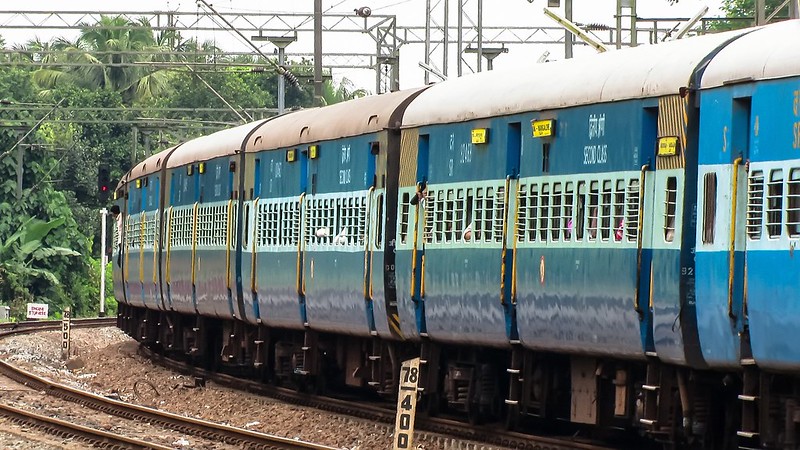
So after this, the designs of our trains would be upgraded every 10 years or so, right? No. 20 years? How about never? Yeah, the trains we see today, those ubiquitous blue dabbas with their window bars and all are still those same designs the Swiss gave to us out in 1955! We have been producing the same dabbas, the ICF factory in Chennai for all its grandstanding being just a glorified photocopy machine. Indian Railways has been stuck in time warp with our classic 1950 retro models, 65-year-old vintage items that should be in museums and not running on tracks. And this is how Indian Railways ended up the major remaining reminder of India’s socialist days.
A major change in design happened only in 1993 when AC 3 tier coaches were introduced and the small square windows gave way to elongated windows. Everything else remained the same. Then in 1995 somebody woke up from a 40 year-hypersleep and realized our trains to be a bit behind the times. Hence arrived brand-new higher-capacity, high-speed, lightweight stainless steel and aluminum coaches (AC only) from Linke-Hoffmann Busch (LHB) of Germany (now part of Alstom) as high-tech as any in the world (as ICF coaches were in 1955) on high-speed Fiat bodies with lateral dampeners and disc brakes. LHB coaches were a major jump and are today used to run on all Rajdhani, Shatabdi, Duronto and some normal express trains. Most importantly LHB coaches have big windows and airy, bright interiors all white aluminum and plastic. And then came the shocker! Non-AC LHB coaches STILL featured those same old cubbyhole windows!!
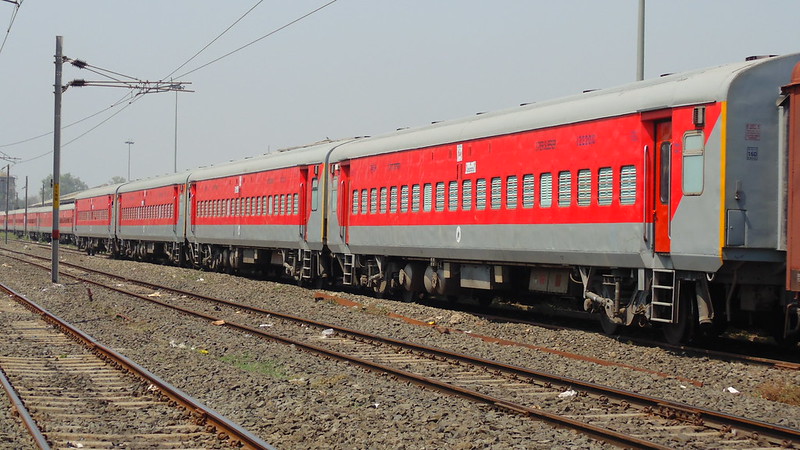
Why were these designs never upgraded? Because monopoly, no incentives to do so, Indian socialism, apathy, corruption, status quo, babu-politician-contractor nexus, “this is enough for us” and “Chalta hai bhai, India hai” I guess. As a nation and people, we give zero priority to aesthetics, resulting in boxy trains with uneven surfaces, fading paint, gaps everywhere, knobbly welding and bad materials. Even newer products like the Double Decker coaches showcase terrible workmanship of products thoughtlessly hammered together. The reason for this: the all-prevalent apathy of government departments and #IndianCulture where being utilitarian pays.
A bit about Indian train liveries: Until the early 1990s, trains in India came in a big, rich palette of many beautiful liveries (color schemes). Yellow-Green-Yellow, Yellow-Green, Red, Red-White/Yellow/Orange-Red, Red-White-Blue, Orange-Yellow, Orange-Cream, Yellow-Red-Purple, Pink-Cream, Brown-Cream-Brown, Cream-Brown/Orange/Blue, All-Blue, Silver, Blue-White, Green-Blue and so many others. Trains were identified by and adored for their color schemes. Then some bureaucrat in the railways decided that all that colorful shit is for losers, and going nuts on standardization, IR blanked-painted all coaches in rust-color Maroon, thereby lending credence to the name “rust buckets”. Then came air-braked coaches and to differentiate them from older air-braked (maroon) coaches, they were painted blue-blue-bluer and this color scheme was very imaginatively called “Vibgyor”! Hahaha. This continues even today and except for Rajdhanis, Shatabdis, Durontos, Garib Raths, Jan Shatabdis, Double Deckers, and the luxury trains, all Indian trains are blue. Damn blue dabbas everywhere. Like I said, no imagination.
Indian Railways Should Make Trains More Aesthetically Pleasing
The time has come when it has become a matter of survival for the railways to innovate, increase speeds, turn out better looking and comfortable coaches or perish, thereby depriving millions of Indians who cannot afford private transportation of options to travel. What the railways should do immediately is to modernize our trains to make them “look” good. Because with better aesthetics come increased comfort and better hygiene, leading to better passenger experience. Resulting “good vibes” will translate into revenue. What Indian Railways should do:
[box type=”shadow”]
- Ditch ICF coach design; stop their production immediately, today, now.
- Ramp up LHB production. Commission all planned coach building factories.
- Convert all non-Express trains to MEMUs/DEMUs.
- Operate using EMU Trainset rakes in a phased manner.
- Fully Air Conditioned trains (Rajdhani, Duronto, Shatabdi, Garib Rath, AC Expresses)
- Later all important Superfasts (Crack SFs, Mails, etc and Intercity day trains)
- All passenger, regional and local trains
- Use LHB coaches to run all other trains (random expresses, weeklies etc)
- Completely redesign the goddamn toilets (vacuum toilets?)
- Brighter, livelier, pleasing interiors, please (do away with the blue)
- Bring better, beautiful and distinct liveries for different trains
- Ensure high-quality finishing and materials
- Automatic Doors. For all coaches. In all trains.
- Cover the underbodies of coaches to improve aerodynamics
- Kick the shit out of people who damage stuff[/box]
This alone will transform Indian Railways beyond recognition. But first, DO AWAY WITH THOSE GODDAMN CUBBYHOLE WINDOWS!!
This complete redesign of our trains should start with the redesign of those small-windowed (with window bars) non-AC coaches. Of course, the easier way to solve this problem would be to make ALL our trains air-conditioned. That is a tall order, so let us not talk about it. Anyway, AC coaches are easy to design and but non-AC coaches aren’t so – we can’t just do away with window bars because we know what will happen. But India is not the only country in the world running non-AC coaches. In India itself, Jan Shatabdi Expresses are run using coaches which have large(er) windows with sliding glass. Why not make JS coaches the standard for Non-AC coach design? Please?
Or can we design the windows to look like something like this below? Here is a non-air-conditioned coach of the German Railway (Deutsche Bahn).
Or like this Czech coach maybe?
The main reason for this cacophony of bigger windows is that they will make interiors of trains more bright and airy and hence more welcoming. All those mica and metal paneling inside non-AC coaches should go as well, but that has already been taken care of in the new LHB coaches, though sadly, the window design remains. Those windows of Indian Railways are like eyes on a face. They give it all the personality. If those windows are changed, the entire personality and perception towards Indian Railways will change.
Indian Railways Need to Move with the Times
Whatever it is, our trains have to be made to look more contemporary, which is the best way to draw people back to them. However, “Improvement in design” does not just mean bigger windows, but improvement in the designs of everything, including interiors, toilets, and vestibules. Yes, this is about the biggest complaint everyone seems to have about our trains: their hygiene, namely, toilets. Indian Railways’ dirty toilets are legendary. They are dirty simply because they are so designed that it is impossible to use them without dirtying them (water on the floor), and also because they were designed for use in the 1960s when people didn’t give many shits (pardon the pun) about cleanliness in trains and such. And add to this the general carelessness of people using them.

Indian Railways trains are probably the most outdated designs in the world for any mode of transportation. Indians can only sigh looking at the beautiful trains abroad, where, even local trains (forget bullet trains) can look make our Rajdhanis look like a bunch of scrap metal. Our locomotives are very powerful and our railways are doing an awesome work under the circumstances, but they will also have to look the part. We should stop worshiping the status quo and liberate ourselves. Today, Indian Railways have no choice but buy coaches from state-supplied monopolies of ICF and RCF who have exactly one product on offer. If Indian Railways cannot bring in new designs themselves, they should buy from Alstom or Bombardier or Stadler or Siemens. The best way would be to decentralize and to allow zonal railways buy trains of their choice, removing ICF and RCF monopolies.
Going a bit further in accordance to the Bibek Debroy report, allowing private railways to operate alongside Indian Railways trains will drastically improve all our trains in one shot. Look at the road sector. Earlier it was either Ashok Leyland or Tata buses. Today the commuter can choose between Volvo, Mercedes, Scania, Eicher, Isuzu, AL or Tata, resulting in the improvement in the quality of all of these! This is what the Bibek Debroy report suggests. Indian Railways is the last large government monopoly in India. The best way for our trains to look better would be to dismantle this monopoly, albeit in stages and staggered. Beautiful trains in beautiful colors will definitely be an image boost for India. Looking forward to awesome Indian trains!
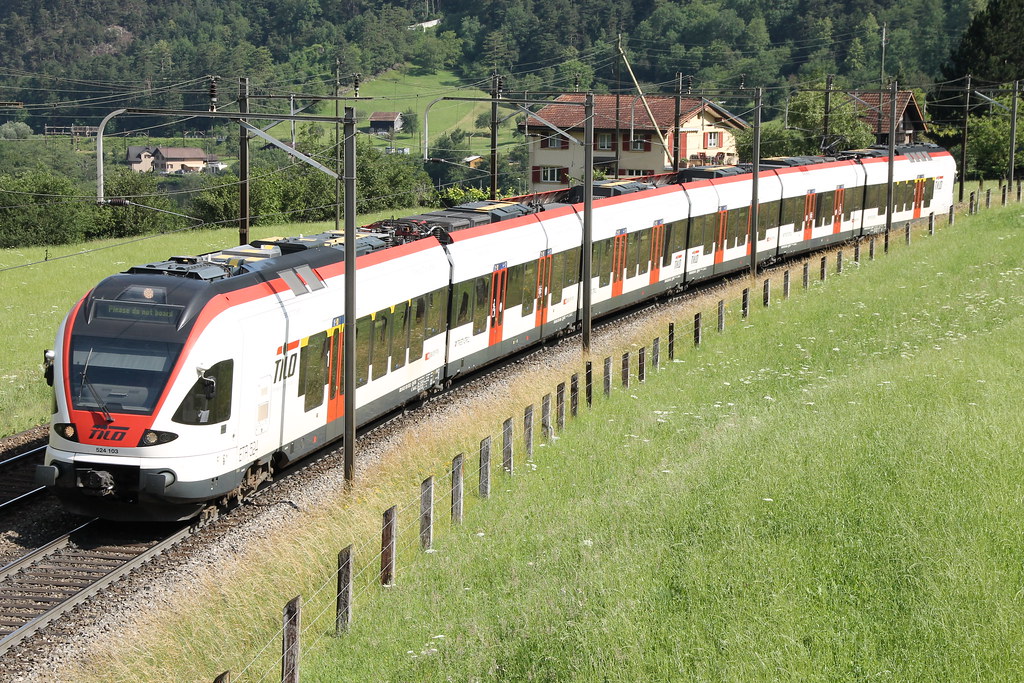
Of course, improving designs alone will not solve India’s railway problems, this post was only about that specific issue. Read about other problems here: Why Indian Trains run so slow and other associated infrastructural problems, Why no new trains can be introduced on Indian Railways, Why we can’t run high speed trains on our networks, How to solve Bangalore’s traffic problems and Overhauling Mumbai’s railway systems.



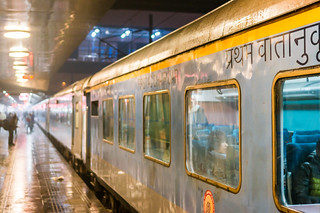
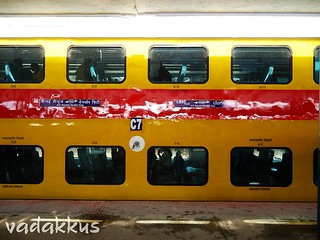




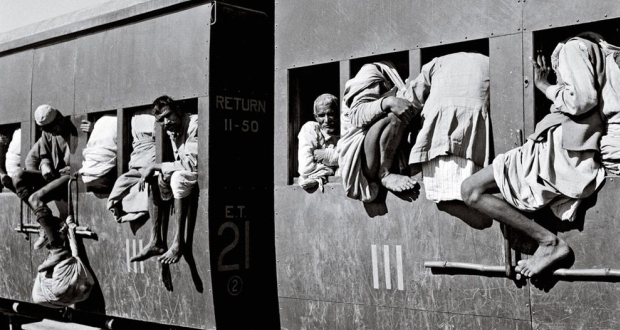
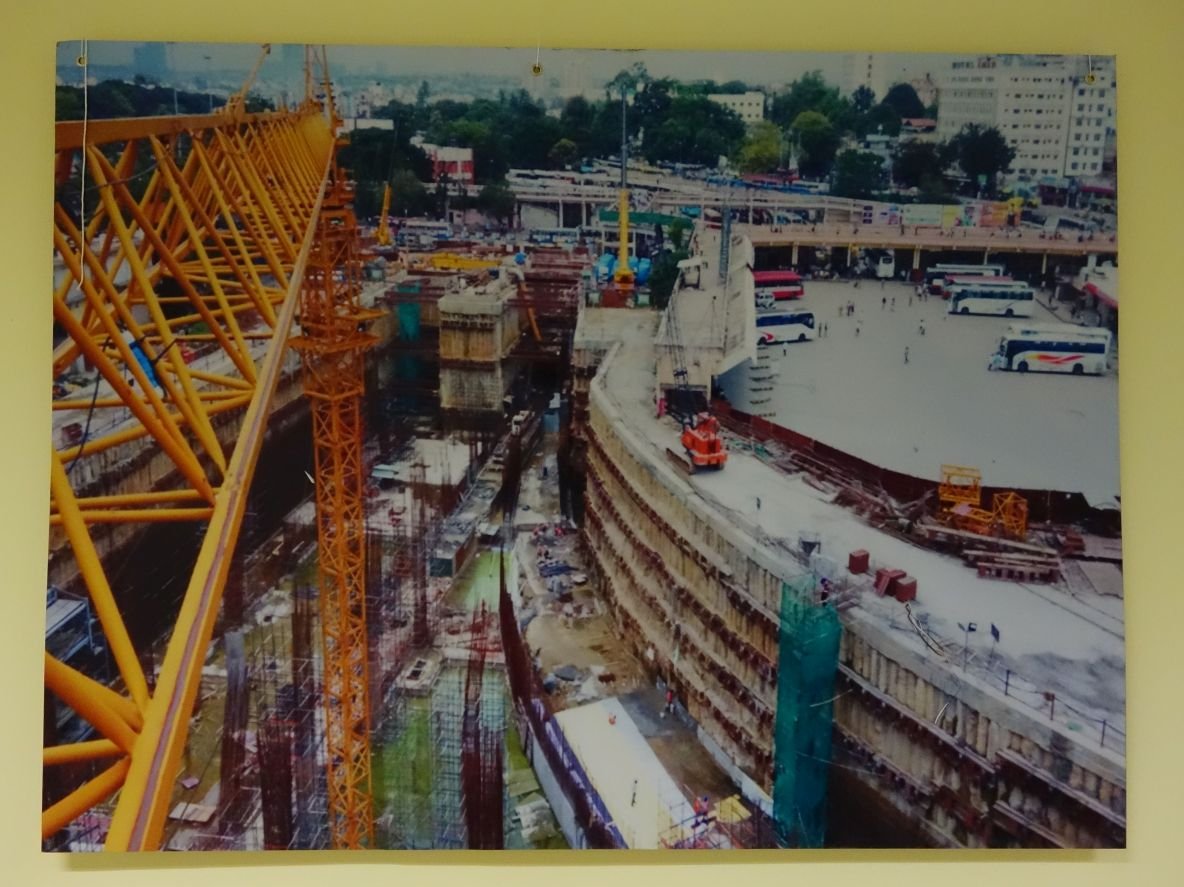
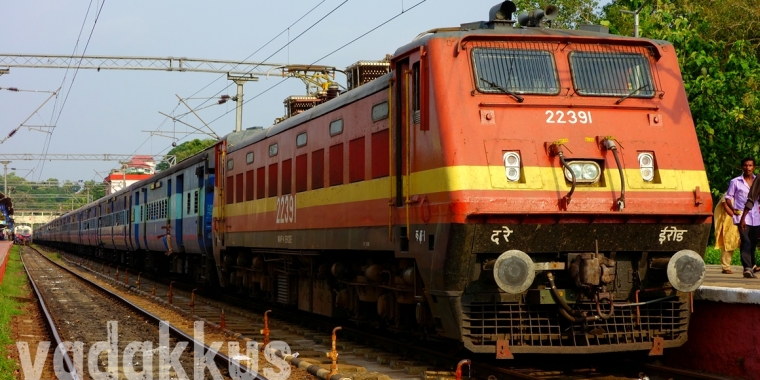
It seems like somebody from IR read this article.
Huh.. At last, (finally) some1 talked about it.. “Chalta Hain’ Attitude is ingrained in our brains we don’t think for one second about being creative & have Image consciousness. Awesome article. Piyush Goyal seems to be taking baby steps in right direction. Hopefully his successors continue to follow in his footsteps. Someday, we can have decent looking trains perhaps with better infrastructure.
I rather enjoy reading articles on this site. But the constant infusion of politics is a bit tiresome. Especially if it is of the American sort.
Passenger trains and regional, daytime express trains can be run by MEMUs and DEMUs. But first, those very annoying high-tension and fuel-tank sections of our power coaches need to be emptied, and power equipment needs to go under the coach floor. It’s a fundamental design element that needs fixing, sooner than later.
Then, not just EMUs, but also unpowered coaches, need a power cable running end to end along the roof. This can enable attachment of two electrics, one at either end, if used in unpowered coaches. This will enable use of enough power for 12-hour overnight journeys between Mumbai/Kolkata and Delhi, and journeys within 24 hours between Delhi and Chennai. With electrics at either end, also with diesels at either end for some, HEP can be provided, there will be no need for those diesel-guzzling, noisy generator vans, saving IR funds as well as the air through which the trains run.
Certainly, we need to move away from the tiny windows. Large window profiles are definitely needed on our non-AC coaches. The age-old excuse of ‘too much dust’ wasn’t there in the odd Jan Shatabdi coaches, and now we find more GS/2S LHB coaches with larger windows. Interestingly, the LHB Prototypes from 1976 and similarly-built regional DMU types 614 and 628 still look very modern, in an Indian scene, and some even have cab cars for push-pull operations.
In the Volvo/Scania age, we may be looking at sleeping on reclining seats for end-to-end travel. Capacity will be reduced from CC accommodation, and slightly more than EX, but reducing end price to customers will make it useful, especially once those EMU trainsets start running premium services. Moreover, this will need only a simple modification of existing tilting trainsets (cost-effective alternative to dedicated high-speed railway), as against reinventing the wheel by building sleeper EMUs, for flash overnight trains. Think Zefiro 250 or Alstom Pendolino with AmTrak Coach Seat accommodation. In fact, if the massive scale of SL passengers in Indian trains can call for accommodating them in CC, then to move to full air-conditioning, it may be time to take off the sleepers.
Double-decker coaches can reduce lengths of our trains. But even the ACDD coach design needs to change- the number of seats needs to be reduced, and the seats made more comfortable. Once they get this element right, then develop a variant with a mix of 3A (middle level) and 2A (top and bottom levels) berths, we can eliminate the side berths and further reduce prices.
Let there be alternatives to LHB coaches too. Bombardier can pack more in an ACDD coach, capable of MPS 200 km/h, so a reduced train length and thus increased power-weight ratio can make some of our trains faster. Talgo’s coaches, 60% the length of LHB coaches, can also passively tilt along curves, so higher average speeds are possible even with locomotives hauling them- Russia have switched from the Siemens-Velaro design to this one for a 440 km route, so much can be saved.
There has been a push. RDSO now wants MEMUs and DEMUs capable of higher speeds, with under-slung equipment and (for MEMUs) a single pantograph to power the whole unit. New LHB GS coaches have larger windows. The Railway Minister is trying to get foreign coach, locomotive and MU builders to build in India, for India. That’s besides the very ambitious intercity EMU projects. Hope these happen.